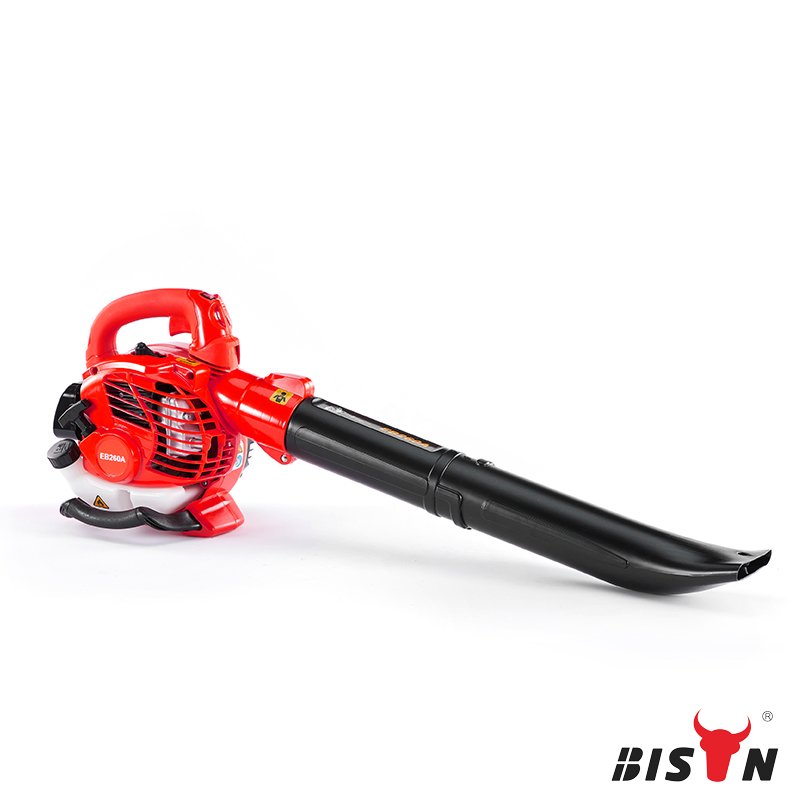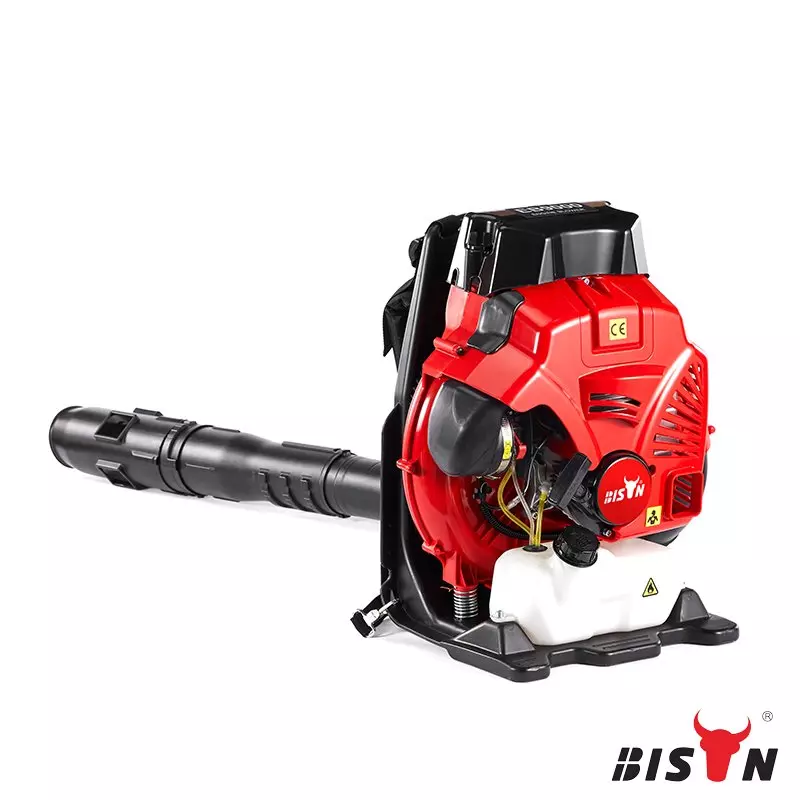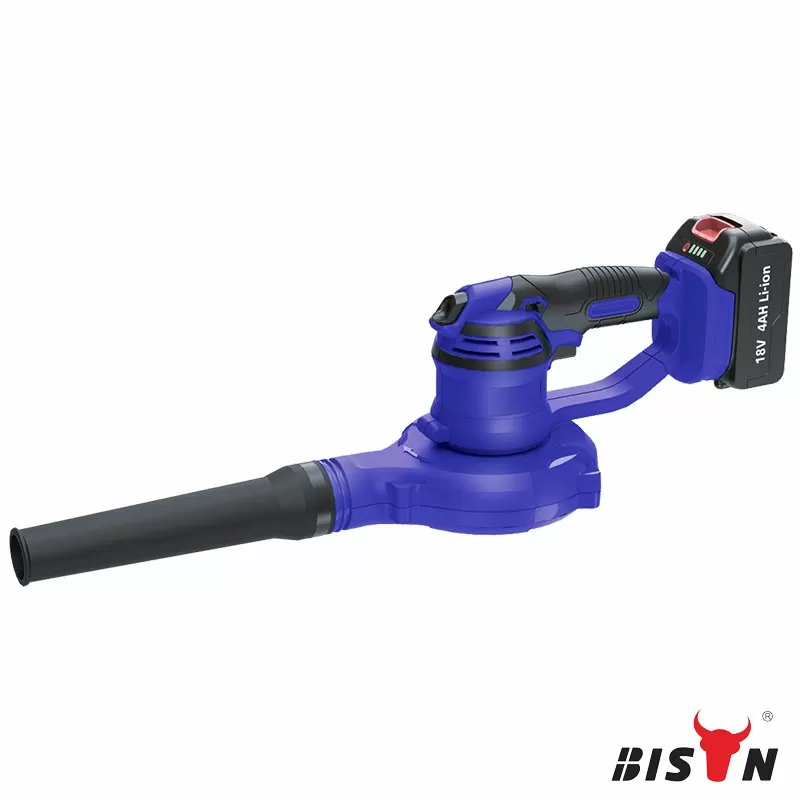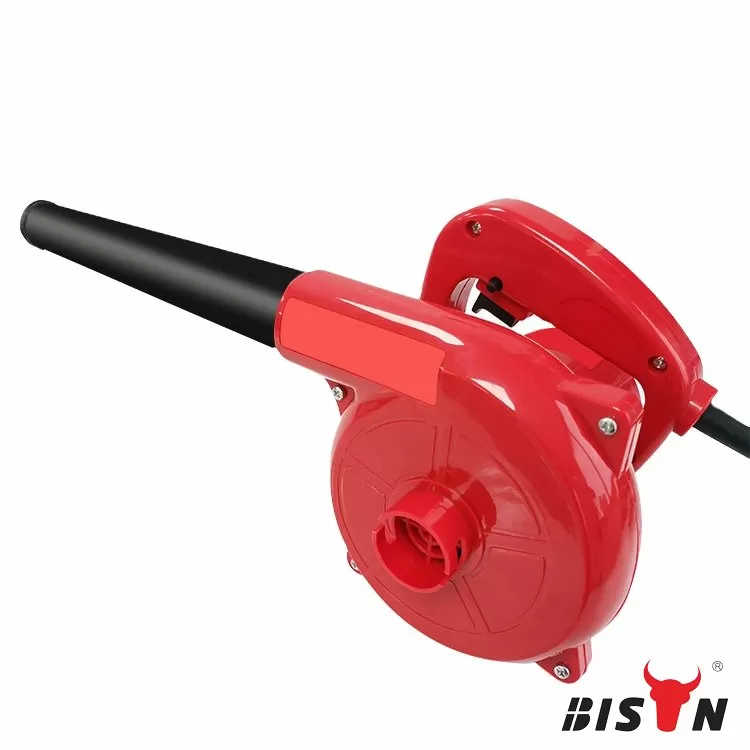difference between leaf blower and snow blower
2023-03-20
Table of content
Leaf blowers are sure to do their job and keep our yard tidy from spring to fall, but what about winter? Will their power last? Or is purchasing a snow blower a better option for removing the snow?
This article will take a closer look at snow blowers, including what they are, how they operate, how they differ from leaf blowers, and whether a leaf blower can replace them.
What is a snow blower?
Snow blowers are devices that predate leaf blowers for many years. In short, they are used to clear snow-covered surfaces using some power source - electricity or gasoline.
Snow blower uses an auger and impeller to push the snow it encounters, or rather, suck it in and spit it out. This makes them very flexible in handling snow consistencies, including melted snow and ice.
Types of snow blowers
We'll focus on the walk-behind snowblowers for home use, as these are the most likely to be relevant to you. Household snow blowers are usually classified as stage 1, stage 2, or stage 3 by construction:
A single-stage snow blower uses an auger to pick up and spit out snow. By contrast, a dual-stage snow blower connects an auger to an impeller, which helps push snow out of the unit. Three-stage snow blowers can also be found on the market, although they are rare in number.
In general, adding more stages aims to improve its performance in deep and wet snow by enlarging its working volume.
However, especially over the past few years, winters aren't what they used to be. In much of the place, much of winter is dealing with foliage and debris similar to any other season. So unless you're really sure you need a snow blower, you probably don't. In contrast, you'll find a leaf blower useful all year round!
Difference between a leaf blower and a snow blower

Now that we know a little bit about what a snow blower is, let's get down to business. Naturally, snowblowers and leaf blowers have diverse designs to reflect their various purposes.
Leaf blowers are versatile power tools that can be used year-round, including winter. Leaf blower manufacturers need to consider that someone might choose to use their equipment to remove snow.
How do they stack up against snow blowers, then? We will consider these two main different aspects:
Flexibility
Leaf blowers, especially handheld units, are smaller, lighter, and easier to handle than snow blowers. It's also easier to aim whatever they're pushing in one direction. This gives leaf blowers a huge advantage over snow blowers—their use is not limited to any particular surface.
In contrast, snow blowers can only be operated on level surfaces, and even the terrain of a garden might be challenging for them. Patios, decks, stairs, and cars are out of the question. In contrast, leaf blowers are excellent for clearing snow from these areas.
Snow type
Leaf blowers can only handle dusty, shallow, well-crystallized snow. After all, they expel air and cannot refine the consistency of snow. You may anticipate that a leaf blower will remove most particles but not rocks. Thick melting snow, or worse, chunks of snow, are too heavy for poor old leaf blowers. In contrast, snowblowers are designed to mechanically gobble up whole chunks of snow and ice.
Using a leaf blower to remove snow

So, what are leaf blowers good for in winter? While they're not always the best choice for removing snow, you can use a leaf blower to clear many elevated and hard-to-reach surfaces, provided you know what you're doing. Cleaning your car, yard, stairs, outdoor furniture, and more can be a quick and easy task if you use your leaf blower correctly.
Also, if it's powerful enough, you can use the leaf blower on other surfaces, such as driveways or sidewalks. The only real limiting factor is the snow depth.
Safety tips for using a leaf blower to remove Snow
The following safety tips will enable you to work more efficiently and safely.
Any gasoline-powered leaf blower can be very noisy. This tool may even damage the hearing of users who use leaf blowers regularly. Therefore, hearing protection prevents damage to your ears, which is permanent in most cases.
Storage is important after you use your leaf blower to remove snow. All equipment should be stored in a cool, dry place away from rain and sun.
It is also necessary to avoid using a leaf blower if the temperature is too low.
Finally, gasoline should be adapted to each season of the year so as not to damage the leaf blower's engine.
This solution is best for handling lightly dry snow. The results will be very patchy when dealing with heavy, wet snow. The leaf blower could even malfunction or end up overheating the engine
What are the benefits of using a leaf blower for snow removal?
While it's not designed to blow snow, leaf blowers do have a knack for blowing snow more efficiently than snow blowers. The benefits of using a leaf blower instead of a snow blower are obvious.
One of them is weight. The leaf blower is lightweight and easy to carry. No extra strength is required for use. Its lightweight nature allows users to perform tasks effortlessly. This is most helpful for people with low back pain, knee pain, and the elderly who are physically weak.
It's also very easy to use. Picking up and operating a leaf blower is easier than using a real snow blower. The parts of most leaf blowers are engineered to fit perfectly into each part, resulting in a perfect balance when in use. Doesn't have as much grip as a snow blower, which can lead to clumsy freehand work.
The leaf blower blows snow easily, faster, and saves time. Better than picking up a snow shovel and digging out the snow to throw. It takes a lot of muscle strength and sweat.
Conclusion
All in all, a snow blower is great equipment when it comes to clearing snow off sidewalks, lawns, and other flat surfaces. They perform well even when dealing with wet snow or ice. However, they are limited in size and shape, making them unsuitable for patios, stairs, decks, windshields, and more.
A leaf blower is likely not enough to clear your driveway or lawn unless you're dealing with light, brittle snowfall. However, they are great for clearing elevated, curved, or other hard-to-reach surfaces if the snow accumulation is reasonable and consistent.
Anyone wanting a leaf blower will serve them well during the winter months. BISON's gasoline-powered model leaf blower is ready to go. Contact us now for a quote, or visit here to learn more about BISON leaf blowers.




